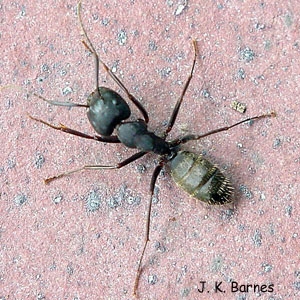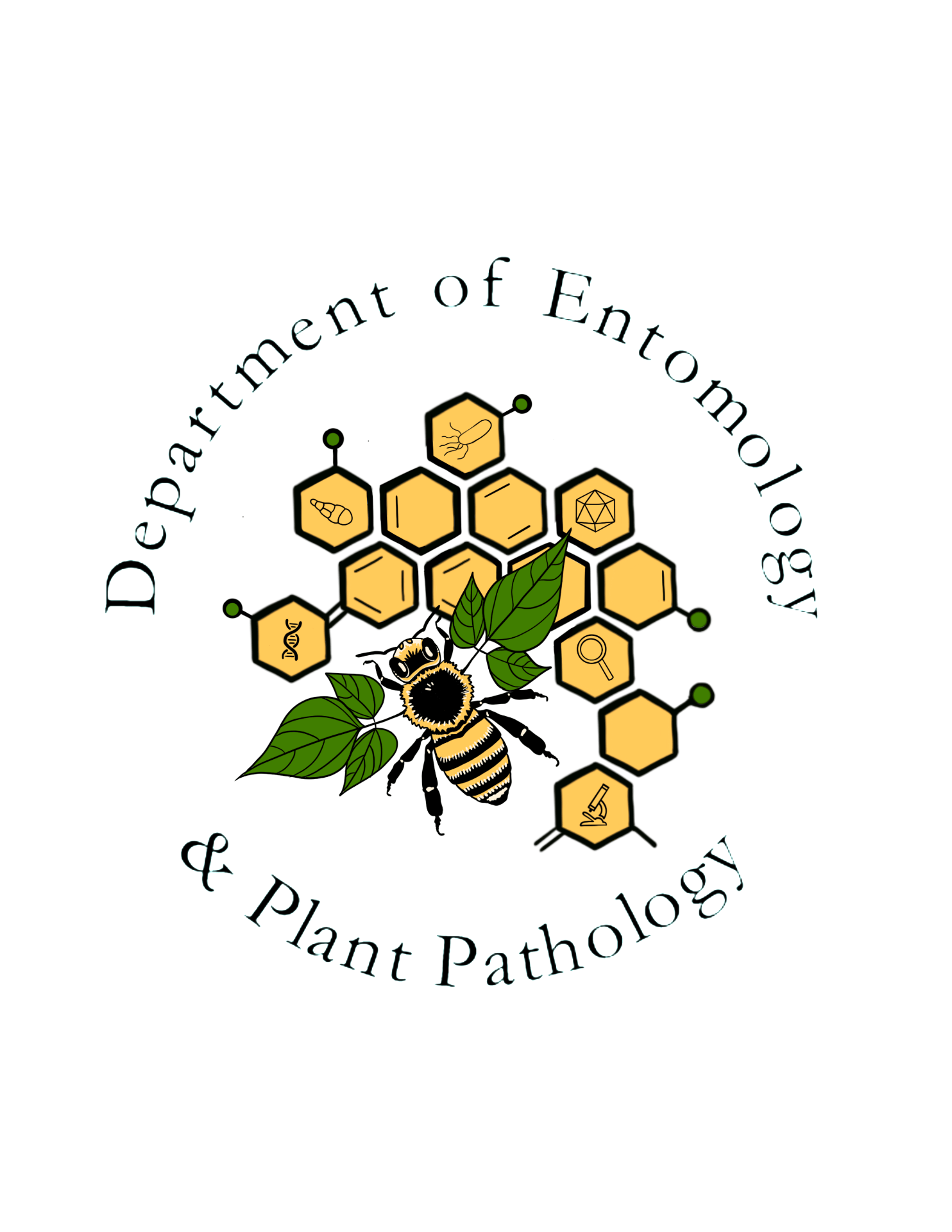Black carpenter ant
Order: Hymenoptera
Family: Formicidae
Genus and species: Camponotus pennsylvanicus (De Geer)
Carpenter ants are named for their habit of hollowing out wood to produce nesting sites. They attract attention because of their generally large size, ability to bite humans, and habit of excavating and dwelling in wood. Some species infest structural timbers to the chagrin of homeowners. They are classified in the one-node ant genus Camponotus. There are about 1000 species worldwide and more than 50 in North America. Approximately two dozen species are known to infest structures in the United States. Most merely nuisance pests, but some are considered serious structural pests.
The black carpenter ant is the most common carpenter ant pest in the United States. It can be recognized by its overall dull black coloration, including the antennae and legs, and the presence of many pale abdominal setae. Colonies have polymorphic workers that range in size from ¼ to ½ inch long. This species nests exclusively in wood, and it is the most important structural pest in the eastern and central United States and southeastern and south central Canada. It is abundant in the North Atlantic states and Midwest, and although it ranges from the Florida panhandle to southwestern Texas, it is less frequently encountered in southern states, including Arkansas. The main nests are usually found outdoors, with satellite colonies indoors.
In their natural habitat, black carpenter ants nest in dead trees. They do not eat or digest wood. They just tunnel through it to create nesting spaces. They consume a wide variety of plant and animal foods, including sap, fruits, honeydew, dead and live insects, flesh, and animal fat. Although they can on occasion tunnel into dry, sound wood, they prefer moist wood, which is easier to chew and excavate. They achieve pest status when a colony invades structural timber, damaging its integrity. Homes built in wooded areas are especially vulnerable to attack. The best way to prevent black carpenter ant infestations is to eliminate any condition that promotes moisture in wood, such as plumbing leaks, clogged roof gutters, poor ventilation, defective flashing, condensation, etc. However, reduced moisture is unlikely to eliminate an established colony. Complete removal of the nest and replacement of the damaged wood is recommended. It is helpful to remove stumps, logs and waste wood near the house, and store firewood away from the house and off the ground.

Typical growing colonies have one wingless queen and many, sterile, wingless female workers. After a few years, when a few thousand workers are present, winged females and males are produced. They pass the winter in the nest, emerging from the established colonies on warm days in spring and early summer. After a mating flight, the male dies, and the female, now a new queen, sheds her wings and searches for an appropriate nesting site. She produces a small first brood consisting of small workers that were nourished only from food reserves stored in the her body. Once they are mature, the queen’s only function is to produce eggs. The adult workers forage, enlarge the nest, and care for the queen and subsequent broods. Colonies can include as many as 15,000 individuals.
